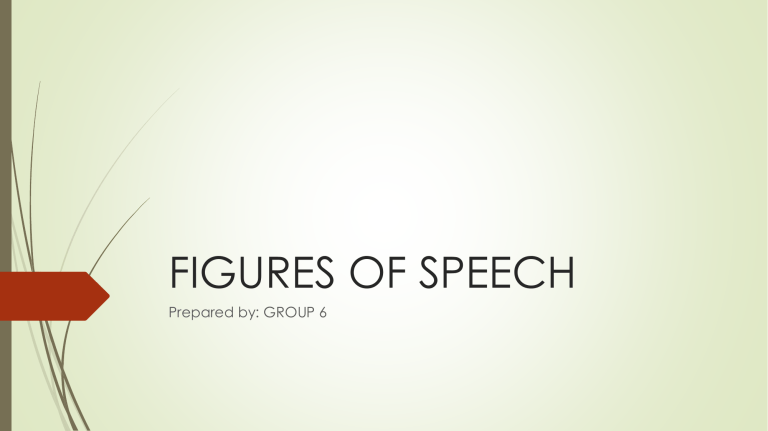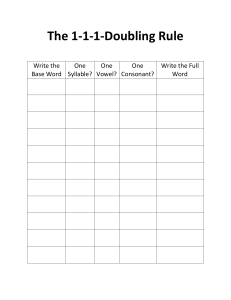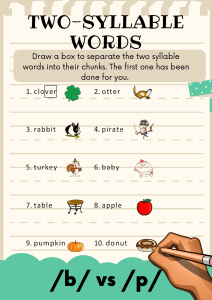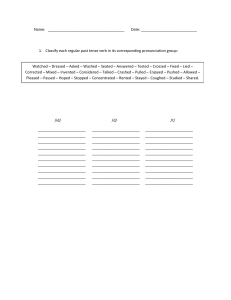
FIGURES OF SPEECH Prepared by: GROUP 6 Anacoenosis – a figure of speech in which an appeal is made to one’s listeners or opponents for their opinion or judgment as to the subject under discussion. Example: “Given the persecution my client has undergone, does he not deserve to have some justifiable anger?” Anacoloutha: - Substituting one word with another whose meaning is very close to the original, but in a non-reciprocal fashion; that is, one could not use the first, original word as a substitute for the second. This is the opposite of acoloutha. Example: “She opened her thoughts to her, She opened her heart to her.” Anacoluthon - is derived from the Greek word anakolouthos, which means “lacking sequence.” It is a stylistic device defined as a syntactic deviation, and interruption within a sentence from one structure to another. In this interruption, the expected sequence of grammar is absent. The grammatical flow of sentences is interrupted in order to begin more sentences. Example: I will have such revenges on you both, That all the world shall―I will do such things, What they are, yet I know not.” Anacrusis An unstressed syllable or syllable group that begins a line of verse but is not counted as part of the first foot. Example Oh such a poor child. Anadiplosis A figure of speech in which a word or group of words located at the end of one clause or sentence is repeated at or near the beginning of the following clause or sentence. This line from the novelist Henry James is an example of anadiplosis: “Our doubt is our passion, and our passion is our task.” Example Fear leads to anger, anger leads to hate, hate leads to suffering. Analogy is a figure of speech that explains something unfamiliar by relating it to something familiar. If your writing is a dirty window your readers can’t see through, then analogies are the glass cleaners that clear everything up. Example She’s as blind as a bat.” Antisthecon - Substitution of one sound, syllable, or letter for another within a word. Example: definate' for 'definite'. Antistrophe - repetition of the same word or phrase at the end of successive clauses Example: The lines read: A day may come when the courage of men fails, when we forsake our friends and break the bonds of fellowship, but it is not this day. Antithesis - from Greek antitheton, “opposition”), a figure of speech in which irreconcilable opposites or strongly contrasting ideas are placed in sharp juxtaposition and sustained tension, as in the saying “Art is long, and Time is fleeting. Antonomasia - a figure of speech in which some defining word or phrase is substituted for a person's proper name Example: Imagine that you have a friend who is a fantastic chef, and you want to say hello. Normal sentence: “Oh, look! Sam’s arrived!” Sentence with Antonomasia: “Oh, look! The great chef has arrived!” Apcope - from the Greek apokoptian, is a figure of speech that is characterized by the abbreviation of a complete word, keeping only the first syllables. Repu, Mat, Capu, Montpel, Stras… . The French love to speak in apocopes, it is a strong marker of French culture and urban style. Example: Photo is an apocope of photograph. Aphaeresis - The omission of a syllable or letter at the beginning of a word. apocope. The omission of a letter or syllable at the end of a word. asyndeton. Example: round (from around) Anamnesis A recalling to mind, or reminiscence. Anamnesis is often used as a narrative technique in fiction and poetry as well as in memoirs and autobiographies. Example A notable example is Marcel Proust's anamnesis brought on by the taste of a madeleine in the first volume of Remembrance of Things Past (1913–27). He set a good example for the rest of us. Anaphora is a device in which a phrase or word is repeated at the start of successive phrases, sentences, or clauses. Anaphora is a literary device that allows writers to emphasize, convey, and reinforce meaning in their writing. Example Lincoln's "we cannot dedicate—we cannot consecrate—we cannot hallow—this ground" Anapodoton is a rhetorical device in which a main clause of a phrase that is not mentioned is implied by a subordinate clause that is mentioned. Example 'If the shoe fits, (wear it)' or 'If pigs had wings, (they would fly)'. ANASTROPHE The deliberate changing of normal word order for emphasis. Example I like potatoes, Potatoes I like Anesis is the addition of a concluding part to a discourse that diminishes the effect of what has been said previously. This figure is the precise opposite of epitasis Opens in new window. Example Tomorrow we water the plants, the whole garden. Antanaclasis Refers to the repetition of the same word in a sentence or saying, with each use of the word have a different meaning. Example: We must, indeed, all hang together or, moat assuredly, we shall all hang separately. Antanagoge An antanagoge is when you combined a positive and negative statement together. Example: This summer season was dry, but not as dry as the one back in 2012. Anthimeria Uses one part of speech as if it were together. The most common form anthimeria is the uses of a noun as jf it were a verb. Example: I can keyboard that article this afternoon. Antimetabole The repetition of words in successive clauses, but in transported grammatical order. Example: I know what I like, and I like what I know. Anthypophora also known Hypophora The practice of asking oneself a question and then immediately answering it. Example: The most beautiful age? Yours! Antiphrasis Use of phrases or words in their opposite sense than the real meaning to create an ironic or comic effect Example: The chihuahua was named Goliath. Antiptosis Is a translation of one case into another, using ‘of’ in the linkage. Uses of preposition ‘of’ more like a conjunction, joining things together rather than showing membership. Example: The folly of man. Instead of “ The foolishness of man”.





